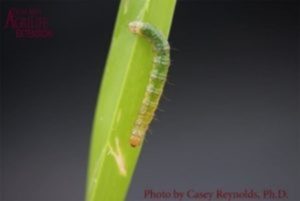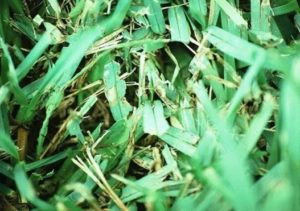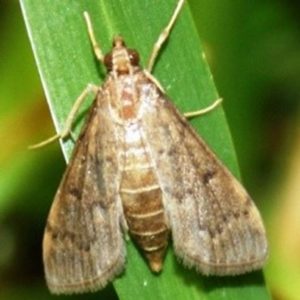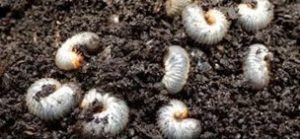Preventing damage is our main goal
Houston and surrounding areas such as Spring, The Woodlands, Magnolia, Tomball, Conroe have warm and sunny climates. This attracts many different turf insects. With early control of these insects, the lawn may be damaged quickly. Below are some of the common turfgrass damaging insects in greater Houston areas.
Our Lawn Insect Preventive programs are intended to protect your lawn from most lawn damaging surface and sub surface insects such as chinch bugs, white grubs, sod webworms and armyworms.
Our Yard Armour Turf Damaging Insect program consists of 3 treatments to protect your lawn from spring through early fall from surface insects. Unlike most of our competitors who use contact insecticide, which can be rain-washed and degraded under the sun, we use premium systemic insecticides, which moves through the grass’s vascular system and gives continued protection up to 60-90 days after each application.
Insects controlled by our Yard Armour Turf Damaging Insect program
Chinch Bug
If your lawn looks dry and you give it a deep watering and it still looks dry, you might have a Chinch Bug infestation. Chinch Bugs are notorious lawn pests that can damage your lawn quickly, especially in scorching and dry turf conditions. Chinch Bugs have piercing and sucking mouthparts to extract nutrition from grass, resulting in the turf turning brown and dying. Chinch bugs are generally small, and usually need a trained set of eyes to identify them. Chinch bug infestations are common in St. Augustine grass but can also damage other types of grass. The problem becomes worse when the lawn lacks water or irrigation. Once the chinch bugs are eradicated, lawn recovery usually is very slow and may require new sod to be installed.
Sod Webworm
If your lawn is brown in areas and upon close inspection you see that the area is much shorter than the surrounding area, you might have a Sod Webworm infestation. Sod webworms are the caterpillar stage of lawn moth. There are many varieties of this species, but the most common one in greater Houston is the genus Crambus. You can see the difference between the moth and caterpillar stages below. The adult moth does not damage the grass directly. It will lay its eggs, then they hatch and become caterpillars (sod webworm larvae). The sod webworm caterpillar will chew various types of grass, especially St. Augustine Grass. We have also seen the damage on Bermuda grass, but to a lesser extent.
Armyworm
If you have Bermuda grass that browning is spreading across your lawn and upon closer inspection you see just stems and no grass blades, you might have Armyworms. Armyworm outbreaks are difficult to predict but are an annual occurrence across Texas, and Houston is definitely no exception. Armyworm populations can be light in some years and heavy in others depending on climate conditions. This late-season caterpillar can spread in high enough number to strip a lawn bare very quickly. Bermuda grass is more commonly affected by armyworms. Still, St. Augustine grass and some other types of grass can also be harmed. Armyworm caterpillars feed for 2-3 weeks before transforming into moths, but 80% of the total volume of grass they consume is in their last 2-3 days of feeding! Armyworms are best treated early in the infestation while the caterpillars are young and more susceptible to treatments, and there is a considerable amount of grass blades left to protect.
Grub Preventative and Curative Insect Treatments
White Grubs Worms – A subsurface insect requiring a special insect treatment
If your lawn is browning and you can pull up on the grass because there are no roots or you have animals digging, you might have grubs. It is essential to know that grub worms, the larvae form of billbugs (sometimes referred to as June bugs or beetles) and scarab beetles, can be found in lawns and gardens in the Houston area’s humid and hot conditions. If you dig down in your flower beds or in your yard, you may see a little, white, relatively fat and large worm that is usually a wound up like this. Those are grub worms. They eat the roots and crown of the grass. Grub worms are not a significant problem in most situations. A few grub worms in your flowerbed, and the lawn might not hurt anything. But when they get in a large concentration of them, they become an issue. The biggest challenge with grub worms is that they live in the soil, and you will not know their presence until the damage has already started occurring on the surface as they feed on the roots. Also, several animals that might feed on grubs when the grubs are active. The presence of white grubs might sometimes attract uninvited animals such as skunks, raccoons, armadillos, foxes, and moles that may dig up a lawn while looking for a tasty grub meal.
One Year Guaranteed Fire Ant Treatment
Fire Ants
If you enjoy working in your yard, have children playing or an allergy to fire ant bites, consider our guaranteed One Year Fire Ant Control treatment.
Fire ants can damage turf and plants with the mounds that they build.
They’ve even been known to damage electrical equipment. They pose a serious health threat to many. Consider adding a treatment specific for fire ant control to make sure you protect your family and lawn.
















